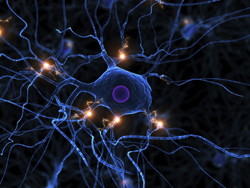Astrocyte–neuron communication in the brain
Brain function is based on neuronal activity and signalling processes between the neurons. Astrocytes are generally considered to play a supportive role in proper neuronal function. New evidence has established the existence of neuron–astrocyte communication in culture preparations and brain slices. However, the properties of astrocytes and their role in vivo are largely unknown. The main objective of the 'Role of astrocytes in neuronal network function in visual cortex' (NEUGLIANET) project was to elucidate the impact of astrocytes in neural network function and sensory information processing in vivo. During the outgoing phase, researchers acquired access to state-of-the-art techniques for real-time physiological recordings of neuronal and astrocyte activities in visual cortical regions (V1). The use of optogenetic tools to selectively manipulate the activity of astrocytes was critical for evaluation of their effects on neuronal network activity. Two-photon microscopy for calcium imaging and electrophysiological recordings was used to monitor neuronal electrical activity in vitro and in vivo. Astrocytes were targeted with an adeno-associated viral vector with light-sensitive channelrhodopsin-2 (ChR2) under an astrocyte-specific promoter. Neuronal activity was recorded from layer 2/3 neurons of V1. The analysis of neuronal activity showed that optogenetic activation of astrocytes induced both a spontaneous excitatory and inhibitory synaptic transmission. The effect of astrocyte activity was cell-specific. Researchers also used two-photon microscopy, this time with single cell-attached electrophysiological recordings, in vivo to show selective photo stimulation of the astrocytes. Astrocytes impacted key visual response features of visual cortex neurons. Astrocytes attenuated inhibitory transmission in cortical networks through the stimulation of particular subsets of inhibitory neurons. In conclusion, project results showed that astrocytes control the excitation/inhibition balance in nerve circuits in the cortex through the dual control of excitatory drive and inhibitory drive. Results of the project have been presented in several high-impact papers. The astrocyte is one of the most exciting topics in neuroscience today. During the first part of the initiative, NEUGLIANET research has made significant advances in characterising astrocyte activity during sensory information processing in the visual cortex.







